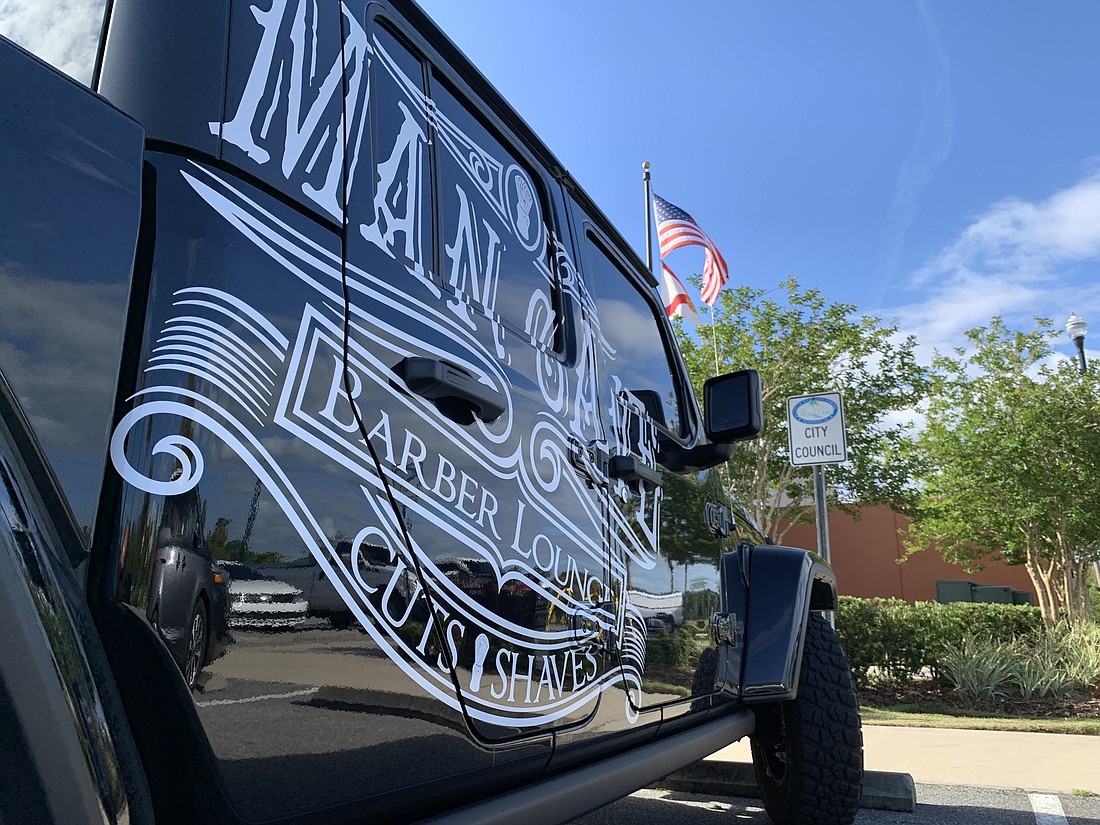- January 17, 2025
-
-
Loading

Loading

Palm Coast bars residents from keeping commercial vehicles with large advertising signage in their driveways overnight. But once a new mayor is sworn in, the city might change that longstanding rule.
City staff surveyed residents in May to see if they would support changing the city code to eliminate the rule.
Councilman Victor Barbosa had suggested the change after receiving a city warning notice about his own truck, which bears signage advertising his barbershop.
Barbosa said easing the restriction would help local businesses that may have suffered during the pandemic.
THE SURVEY
The city’s single-question survey had asked: “Would you be in favor of amending the Code of Ordinances Sec. 44-34 (C) to allow ONE commercial vehicle (passenger car, panel van, pickup truck or similar) with advertising markings to park in a residential driveway?”
Below the text of the question, the survey showed photos of four example vehicles bearing advertising of varying levels of garishness.
The proposal will go before the planning board once and the City Council twice — giving residents multiple opportunities to comment.
But residents seem to have tried to game the survey, which was internet-based and didn’t require registration. There were 16,491 replies, but many of those linked to the same IP addresses.
In some cases, an IP address may have been associated with a business or some other place that would be expected to have many people. Still, the sheer numbers linked to some IP address — in one case, a single IP address was tied to about 3,000 mostly-“no” votes — cast doubt on the results’ validity.
That presented a problem for city staff, who had to determine what to do with the apparent duplicate-votes.
The city’s IT staff opted to count each IP address as a single vote.
That meant that if one IP address voted 100 times in the affirmative, it would be recorded as a single yes-vote rather than 100 yes votes. If the IP address’ votes were divided — say, it voted 75 times in favor, but 25 times against — its responses would be put down as 0.75 “yes” votes and 0.25 “no” votes.
Using that methodology gave the city government a picture of a divided population, with 49.32% against changing the existing rule, 49.29% in favor of changing it, and 1.38% undecided.
“It’s sad that we didn’t get the correct numbers from the residents,” Barbosa said. “I guess it all comes down to us.”
Councilman Eddie Branquinho proposed another option: The council, he said, could place the proposed change on the city’s 2022 ballot as a referendum, rather than making the decision itself.
Councilman Ed Danko disagreed, recalling that when he’d suggested a referendum on the proposed tennis center expansion, Branquinho, at the time, had opposed a referendum.
“You made a very valid point, though, in not being in favor of it,” Danko said. “You said it’s up to us to make those tough decisions.”
Danko suggested that the council wait to vote on the issue until a new mayor is sworn in, rather than placing it up for referendum. Branquinho was willing to do that.
But Councilman Nick Klufas warned that relying on the incoming mayor to cast what may be the swing vote on such a divisive issue places the mayor in an unenviable position.
“We’re guaranteeing that this person is going to have to come in and make a decision that is going to upset the 49.3%,” he said.
“If you’re going to be mayor,” Danko replied, “I think you’re going to have to step up to that plate and swing at that ball.”
Klufas said he’d like to see something more than a 50-50 split before making a decision that could change the landscape of the city.
Barbosa said he didn’t see the proposed ordinance amendment as changing the city’s landscape.
“Are we really changing the landscape, other than helping the working business people?” Barbosa said.
He noted that the city already allows law enforcement vehicles with markings to park in driveways overnight.
Branquinho said changing the rule would alter peoples’ view. He said he has a friend who’d like to park her commercial truck at home overnight, and it broke his heart that she can’t. But then he spoke to her neighbors, he said, “and they’re dying to get that thing out of there.”
He pointed out a difference between the law enforcement vehicles that the city allows in driveways overnight, and the commercial cars that it bans: The law enforcement vehicles, he said, might be responding to emergency calls in the middle of the night.
City Attorney Bill Reischmann noted that if the proposed ordinance change comes to the City Council for a vote, residents will have multiple opportunities to address the council during the council meetings’ public comment periods.
An ordinance change would come before the city’s planning board once, and then before the City Council twice.